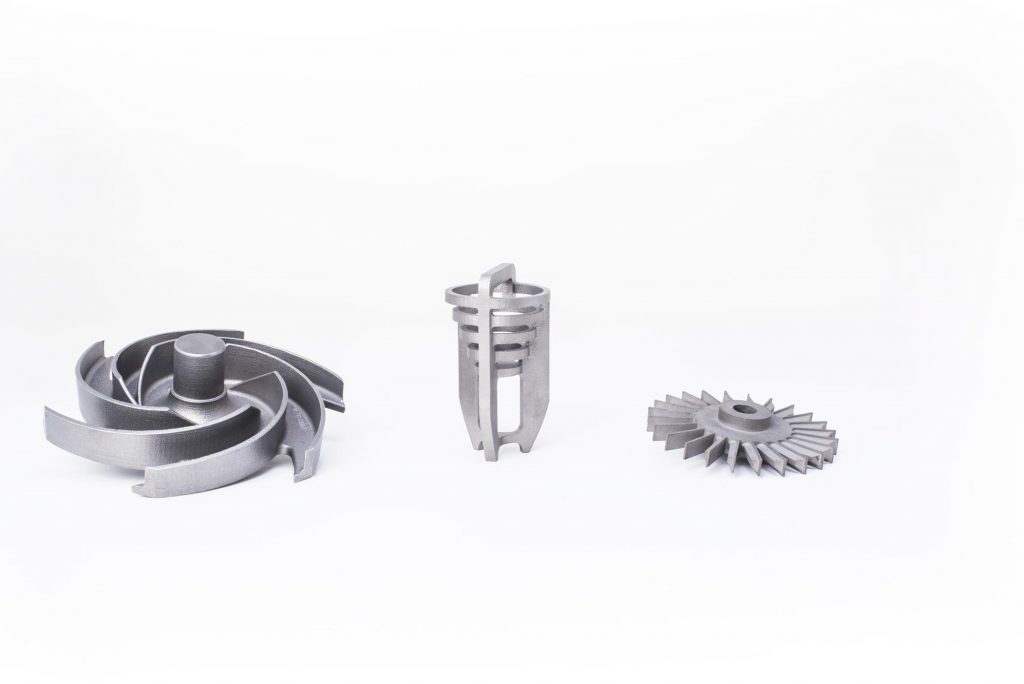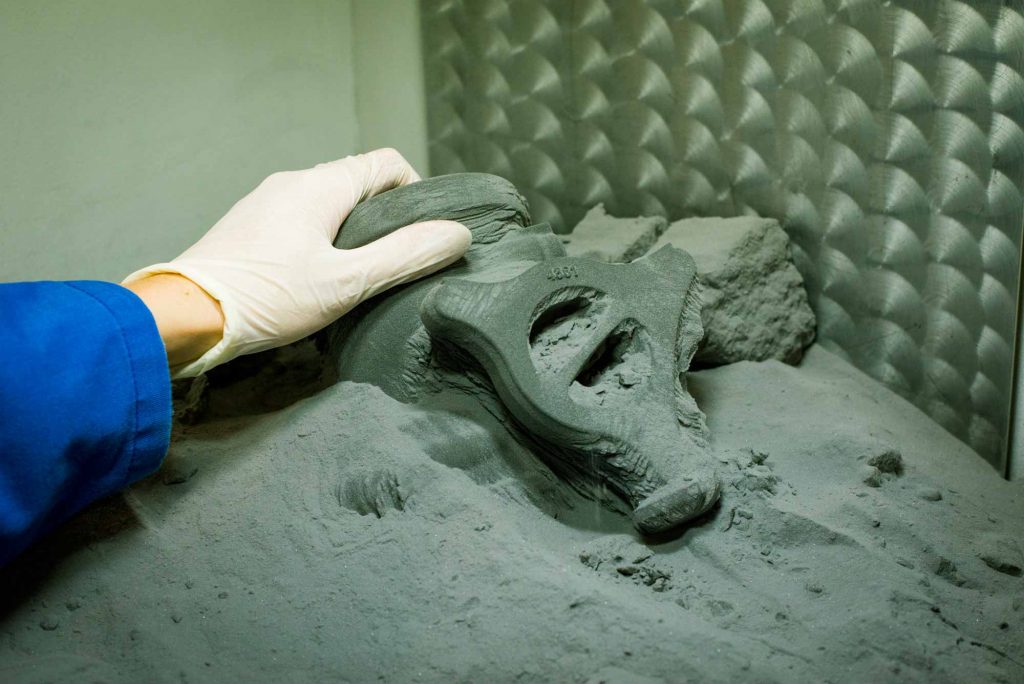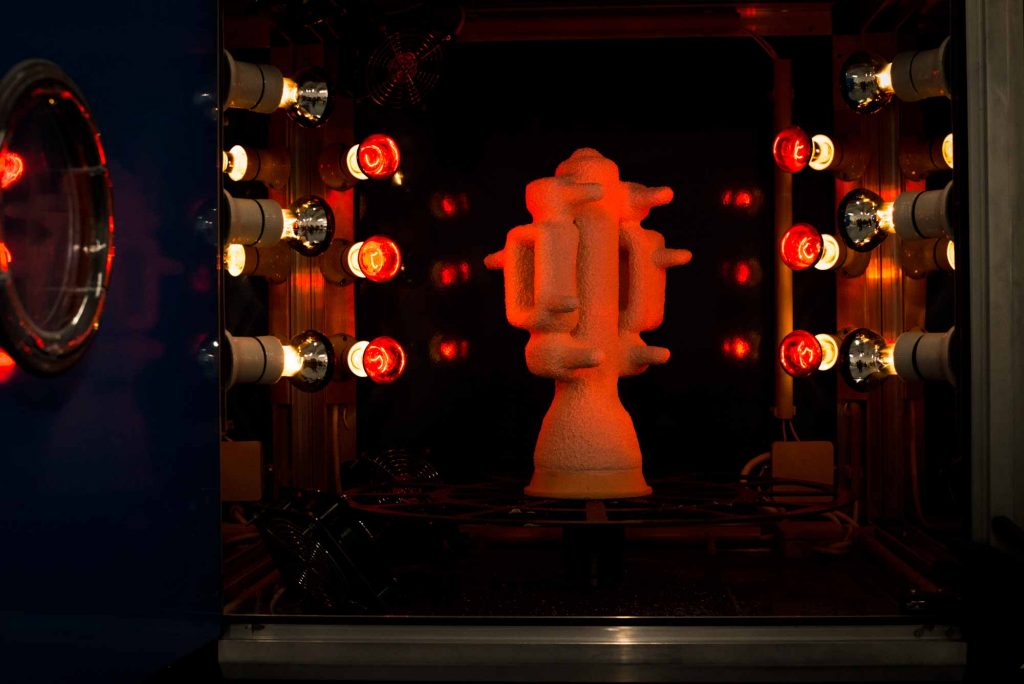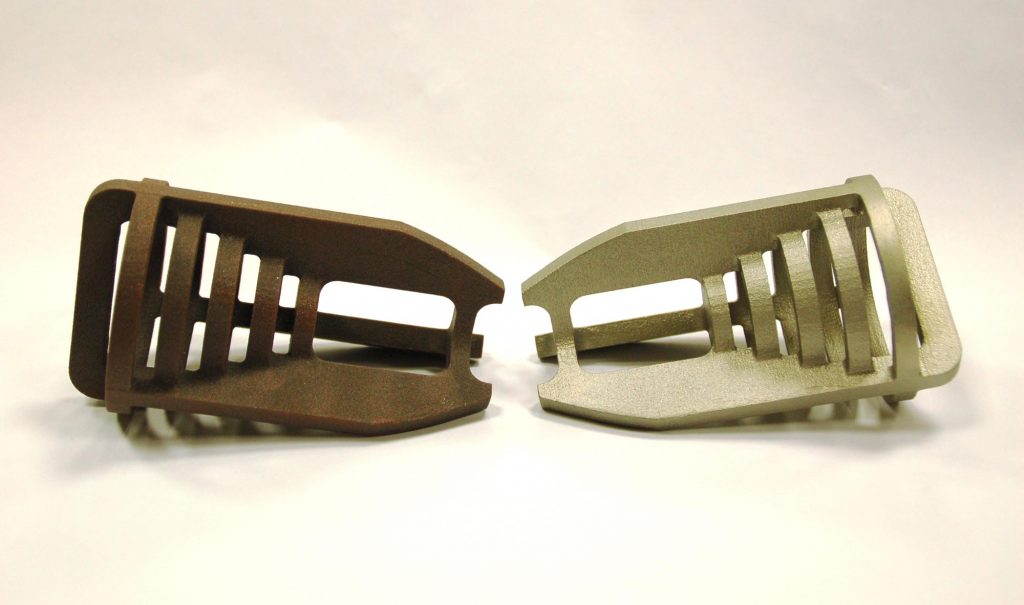Rapid prototyping
3D LASER SINTERING
Like all methods of 3D printing, the process starts with a computer-aided design (CAD) file. During selective laser sintering (SLS) a laser heats the powder to just below its melting point, which fuses the particles in the powder together into a solid form. Once the initial layer is formed, the platform of the SLS machine drops – usually by 0,2-0,3 mm – exposing a new layer of powder for the laser to trace and fuse together. This process continues again and again until the entire part has been printed.
In precision casting the most commonly used material for laser sintering is polystyrene powder, which – following the prescribed technology and circumstances – can be burned out. It is applicable for printing complex surfaces and designs.
The surface of the raw polystyrene is not that perfect as the surface of the wax patterns, commonly used in precision casting, thus the printed parts need additional surface treatment, if required. For this we use special impregnating fluids and hand tools.
After 3D printing of polystyrene samples the production follows the traditional process of investment casting (assembly of patterns onto a casting unit, shelling, dewaxing and burning of shells, pouring of metal, removal of ceramics, cut-off, grinding, shot blasting, heat treatment, machining, testing). For further shortening of the production time we use special quick drying equipment, based on our own know-how. It allows the continuous control of temperature, moisture and air velocity during the process. Thanks to the special equipment, the shell can be finished within a single day.
There are various alternatives to create geometric, functional or technical prototypes of a newly developed product using generative production methods. Depending on accuracy, properties of the material, needed quantity, required surface quality and complexity the most appropriate chain of operations should be chosen. The implementation of all this procedures, starting with the CAD-model, going through the generative production process, as well as through the steps of the production technology, up to the final quality approval, is determining for the contribution of the ready-to-assemble castings to the success in reducing the time of development.
Material: polystyrene powder
Layer thickness: 0,15 mm
Max dimensions: 360 x 360 x 670 mm
Printing: 1-2 days
Alloys: low- and high-alloy steels (corrosion- and heat-resistant), wear-resistant alloys, Ni- and Co-based alloys, bronze, aluminum-alloys
Delivery time: based on the product and quantity; for raw castings on average 3 weeks, machined parts on average 4 weeks



